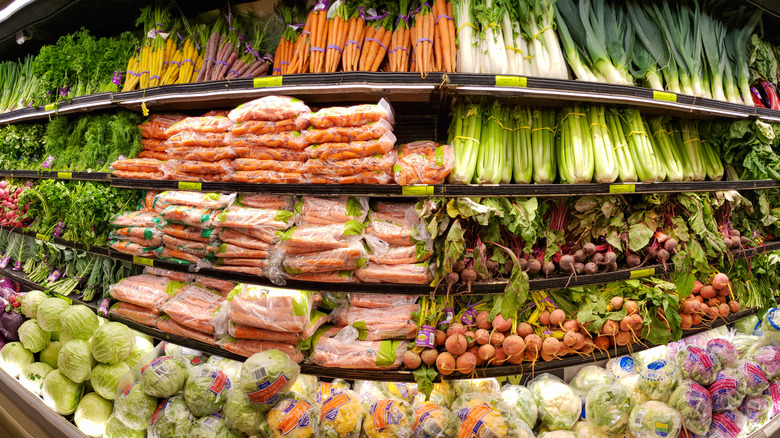Whole Foods' Hot Bar Prices Stunned An International Shopper On TikTok
A lesson people typically learn while traveling is that food prices differ from place to place. For better or worse, this can create quite a culture shock if unexpected. According to Commodity, countries such as Iceland, Switzerland, and Denmark are the priciest when it comes to food. In the United States, the cost of an average meal for two is $55, (though New York City is right up there as "the only city to contend with its Scandinavian competitors" cost-wise). The most inexpensive places to find a meal are Bangladesh, India, Pakistan, and Nepal. And even though food prices in America have risen more than 4.5%, Americans still spend less on groceries overall than those in Europe do (per Quartz).
In the United States, the price you pay for food varies tremendously depending on what grocery store you're shopping at. Per Go Banking Rates, the cost of food at Whole Foods is 15% more than the prices at Walmart and Kroger, and for good reason: much of its food doesn't contain artificial colors, flavors, or preservatives. One international shopper must've not known what to expect when they stepped inside a U.S. Whole Foods, prompting them to share their experience on TikTok.
Commenters roasted the costly decision
TikToker @wanderonwards couldn't believe their eyes after seeing how much a simple Whole Foods meal costs in America. "I will never recover financially from this trip," read the caption. The shopper filmed the self-check-out kiosk while buying a "box of vegetables and two chicken pieces," which equaled $22.60. "How does anyone survive in America?" text on the video asked.
TikTokers in the comments were quick to criticize the original poster's choice of store. They wrote "Step 1: don't go to Whole Foods," and "First mistake was shopping at Whole Foods." Others answered the survival question asked in the video. "We aren't well and none of us have savings," one commenter wrote. "Plenty of us don't," wrote another.
According to NPR and the Bureau of Economic Analysis, the latter replies aren't far off from the truth. Due to recent inflation, revolving credit has increased by 20% annually, and the average amount Americans have in their savings accounts has dropped to the lowest point in 14 years.

